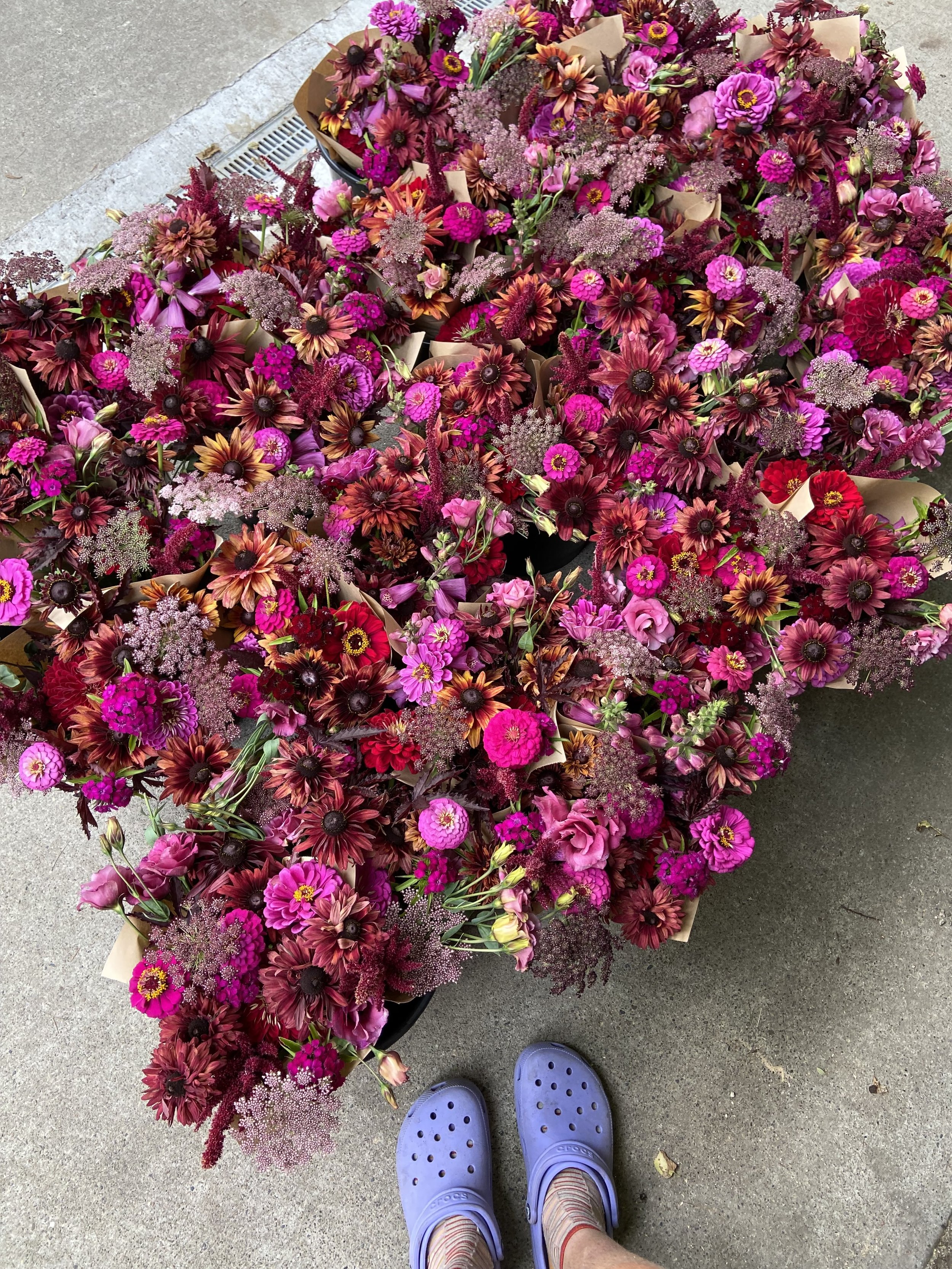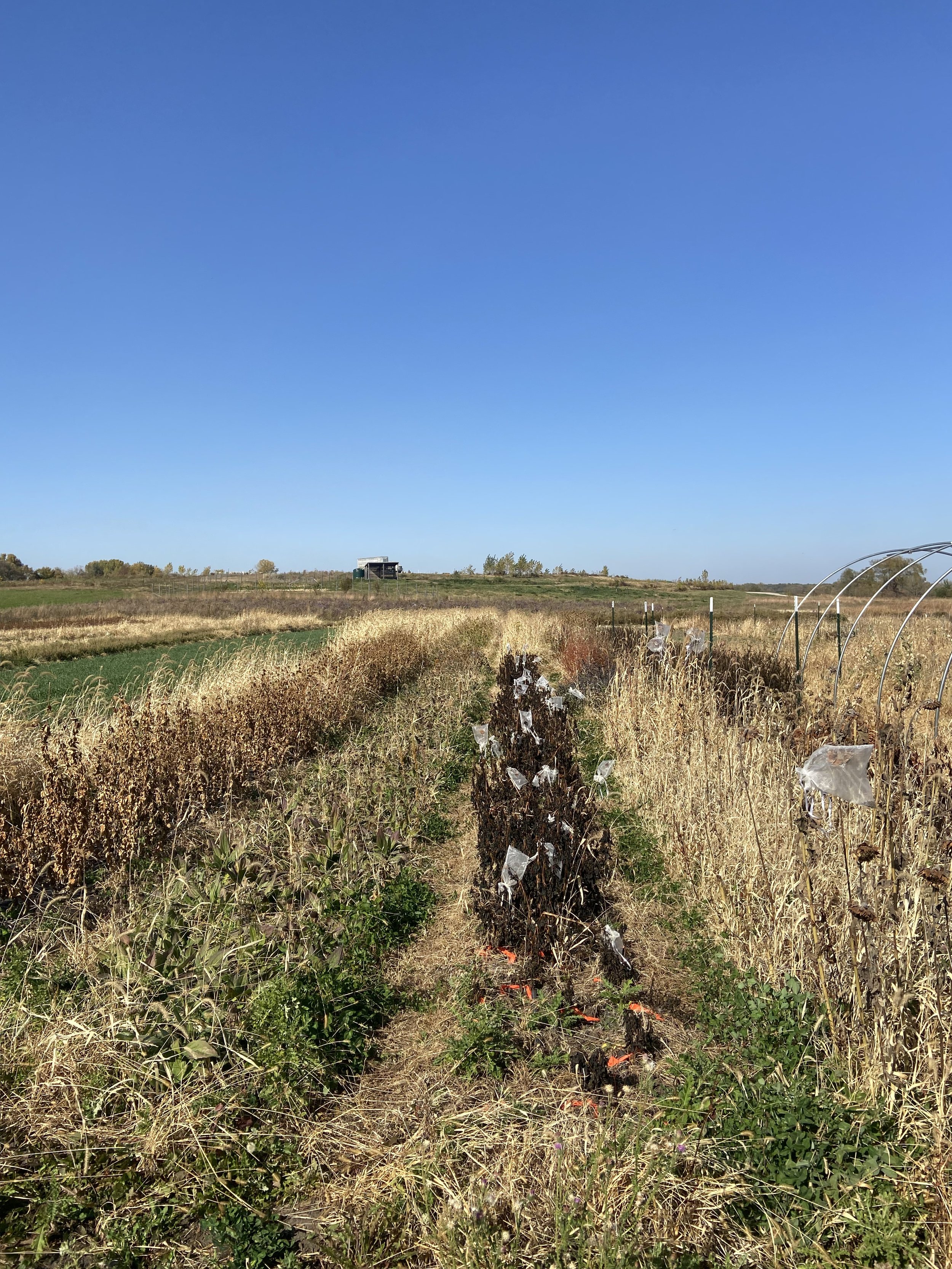Why local flowers are better
Ask any florist who has worked with local blooms and foliage and they’ll all agree: local flowers are just better. I am certainly biased because I have a career in growing and selling local flowers, but hopefully you’ll come to the same conclusion as me and all the aforementioned florists after reading this article.
Local flowers are the highest quality we can find. This is true because they are the freshest flowers we can find. Local flowers are harvested at the perfect stage to be used soon, as opposed to imported flowers which have to be cut on the early side in order to live to see their destination. Furthermore, local flowers typically travel in more favorable conditions. Oftentimes local flowers are transported in buckets of water (imported flowers are mostly shipped dry) and they aren’t jammed into boxes to maximize space efficiency. Imported flowers can shop up to the wholesaler looking quite bruised and thirsty, and florists have to account for more loss from packaging or transportation stress.
Local flowers last longer. The life clock of most flowers starts ticking the moment they are cut. Local flowers are often cut only a day or two before we buy them at the wholesaler. Imported flowers are cut upwards of a week before they get to the cooler in a wholesale warehouse, so they’ve already lived half their life before they even get into our hands! Florists and flower enthusiasts alike know that the beauty of flowers is in their ephemeral nature, but we are always hoping for maximum vase life of the flowers we design for clients, and local flowers give us days (or even weeks!) more time with them than imported flowers.
Local flowers offer a huge selection. Some folks might only think of sunflowers and zinnias when they think of local flowers, but there are so, so many more varieties! Flower farmers are capable of growing a very large number of both annuals and perennials, and every flower farmer I know is constantly trialing new varieties to add to their offering. The selection available for florists to choose from at our local flower market in the Twin Cities is stunning, and I have never once longed for a perfect item that wasn’t offered.
Local farmers can offer unique varieties. As amazing as the shipping technologies are for imported flowers, there are just some varieties that cannot be packed up into a box and arrive at their destination in a useable state (or at least not a state I’d use them in). Often, these delicate blooms are exactly the ones that are the most eye-catching in an arrangement or bouquet! Such examples include cosmos, dahlias, sweet peas, Queen Anne’s lace, nicotiana, and zinnias.
Most local flowers are grown chemical free. When growing at a smaller scale than an industrial flower farm, it is much easier to manage diseases and pests without the use of chemicals. Additionally, many flower farmers work for themselves and make the rules, and who would want to subject themselves to the dangers of highly toxic chemical fertilizers, pesticides, herbicides, and fungicides?! I would never stuff my face into a bouquet purchased from a grocery store or made by a florist who only uses imported, but I definitely would (and do) stuff my face into a bunch of sweet peas and inhale as deeply as I could. If you’re thinking you wouldn’t do the same, I still encourage you to read this article about the dangers of chemical use and industrial flower farm workers.
We develop personal relationships with flower farmers. When we buy local flowers, we usually get to know many more people in the supply chain than when buying imported product. I know several of the flowers farmers I buy from personally, and have even been to multiple of their farms! In addition, I know the local wholesale buyer by name, and she knows me and my business. Building personal relationships with the folks who provide us with the goods we use every day is a very special thing; we can’t say that about most products we bring into our businesses or homes.
Local flowers often have minimal packaging. As I mentioned before, local flowers are typically transported in bunches tied with rubber bands, in buckets of water. This is much different than imported flowers, which are typically transported bunched in plastic sleeves, packed dry into cardboard boxes. When I process a wedding’s worth of imported flowers my trash can is full of these no-longer-necessary sleeves and pesticide-covered rubber bands, while the recycling bin fills up with cardboard boxes that I don’t have another use for. After processing local flowers in any quantity, I am only left with rubber bands that I can give back to a flower farmer or use for my own flower bunching needs.
Local flowers have WAY fewer emissions than imported ones. Flowers shipped from Columbia or Ecuador (the two most common sources for flowers purchased in the US) travel over 3000 miles in airplanes, and those shipped from Holland and Japan, two other popular sources of seasonal flowers, travel even farther, at 4500 or 6000 miles respectively. A majority of the local flowers that we source come from less than a 2 hour drive away.






